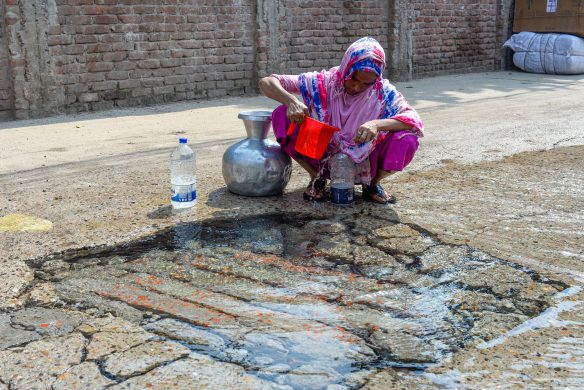Ifølge en rapport fra det amerikanske rumagentur NASA, viser store regnskovsområder i Amazonas de første tegn på en omfattende skovnedbrydning, som følge af klimaforandringerne.
PASADENA, 17 January 2013 (NASA): – An area of the Amazon rainforest twice the size of California continues to suffer from the effects of a megadrought (tørke) that began in 2005, finds a new NASA-led study. These results, together with observed recurrences (tilbagevendelser) of droughts every few years and associated damage to the forests in southern and western Amazonia in the past decade (årti), suggest these rainforests may be showing the first signs of potential large-scale degradation (nedbrydning) due to climate change.
An international research team led by Sassan Saatchi of NASA’s Jet Propulsion Laboratory, Pasadena, Calif., analyzed more than a decade of satellite microwave radar data collected between 2000 and 2009 over Amazonia. The observations included measurements of rainfall from NASA’s Tropical Rainfall Measuring Mission and measurements of the moisture content (fugtighedsindhold) and structure of the forest canopy (løvtag) (top layer) from the Seawinds scatterometer on NASA’s QuikScat spacecraft.
Konsekvenser af tørke i 2005 endnu ikke udbedret
The scientists found that during the summer of 2005, more than 270,000 square miles (700,000 square kilometers, or 70 million hectares) of pristine (oprindelig), old-growth forest in southwestern Amazonia experienced an extensive, severe drought. This megadrought caused widespread (omfattende) changes to the forest canopy that were detectable by satellite. The changes suggest dieback (visne) of branches and tree falls, especially among the older, larger, more vulnerable canopy trees that blanket the forest.
While rainfall levels gradually recovered in subsequent (efterfølgende) years, the damage to the forest canopy persisted all the way to the next major drought, which began in 2010. About half the forest affected by the 2005 drought – an area the size of California – did not recover by the time QuikScat stopped gathering global data in November 2009 and before the start of a more extensive drought in 2010.
“The biggest surprise for us was that the effects appeared to persist for years after the 2005 drought,” said study co-author Yadvinder Malhi of the University of Oxford, United Kingdom. “We had expected the forest canopy to bounce back after a year with a new flush of leaf growth, but the damage appeared to persist right up to the subsequent drought in 2010.”
Første satellite-baserede undersøgelse af tørkens langtidseffekter
Recent Amazonian droughts have drawn attention to the vulnerability (sårbarhed) of tropical forests to climate change. Satellite and ground data have shown an increase in wildfires during drought years and tree die-offs following severe droughts. Until now, there had been no satellite-based assessment of the multi-year impacts of these droughts across all of Amazonia. Large-scale droughts can lead to sustained releases of carbon dioxide from decaying (nedbrudt) wood, affecting ecosystems and Earth’s carbon cycle.
Læs mere her: http://www.nasa.gov/topics/earth/features/earth20130117.html
Begynd ved: “The researchers attribute the 2005 Amazonian drought to…”














